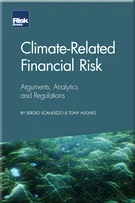Machine learning: origins
Machine learning: origins
Preface
Introduction: human-machine entanglement
Machine learning: origins
Useful tools
Decision trees
Introduction to neural networks
Back-propagation
Regularisation
Optimisation
Building neural networks
Early applications of machine learning
Interpreting neural network decisions
Predicting corporate bond returns
Deep learning networks
Applications of deep learning networks
Machine intelligence
Consciousness
The future and its challenges
Artificial intelligence and the military
Final thoughts
Appendix
Epilogue
Acknowledgements
This chapter introduces machine learning and artificial intelligence. It presents the types of knowledge structures and types of learning. The origin of machine learning is traced to McCulloch and Pitt’s artificial neuron, and its progression to today is traced in this chapter. Finally, analytical tools, including percentiles, exponentials, statistics and decision theory, are presented.
Some would describe using computers, mathematics and data to aid decision-making as artificial intelligence; others might call it data science or machine learning; and still others think it’s damned lies or the devil.11 The term “damned lies” was inspired by Mark Twain: “There are three kinds of lies: lies, damned lies, and statistics” (Twain 1907, p. 471). For others, this book demonstrates how mathematics embedded in computer algorithms when applied to data can be useful for solving human problems.22 An algorithm is defined as a process or set of rules to be followed in calculations or other problem-solving operations, especially by a computer (Oxford Dictionaries Online. URL: https://premium.oxforddictionaries.com/definition/english/algorithm). This is called data science (Dhar 2013). But the book
Copyright Infopro Digital Limited. All rights reserved.
As outlined in our terms and conditions, https://www.infopro-digital.com/terms-and-conditions/subscriptions/ (point 2.4), printing is limited to a single copy.
If you would like to purchase additional rights please email info@risk.net
Copyright Infopro Digital Limited. All rights reserved.
You may share this content using our article tools. As outlined in our terms and conditions, https://www.infopro-digital.com/terms-and-conditions/subscriptions/ (clause 2.4), an Authorised User may only make one copy of the materials for their own personal use. You must also comply with the restrictions in clause 2.5.
If you would like to purchase additional rights please email info@risk.net











